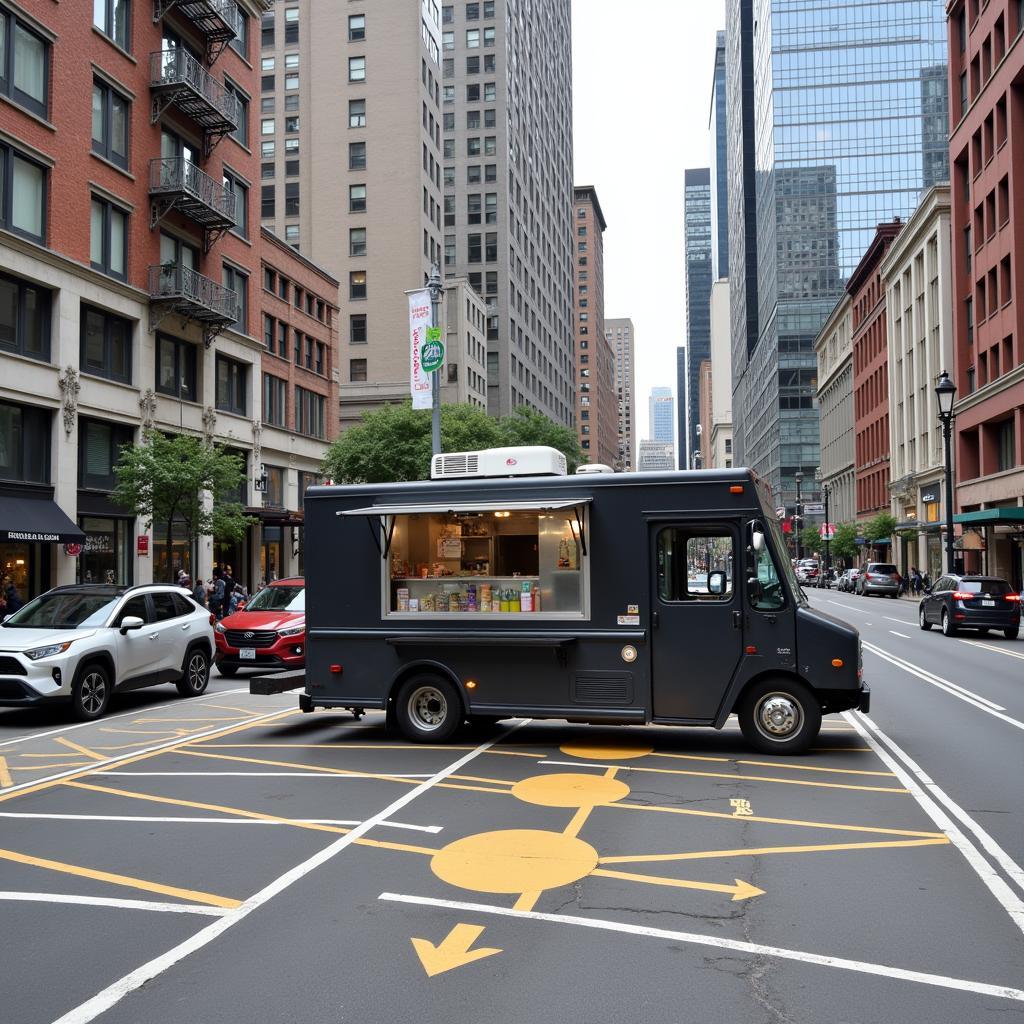When launching your dream food truck business, it’s easy to get caught up in menu planning and branding. But one often-overlooked aspect is navigating the world of Food Truck Height regulations. Understanding the legal limits for your vehicle’s height is crucial, as exceeding these regulations can lead to hefty fines or even prevent you from operating altogether.
Why Food Truck Height Matters
You might be wondering why there are height restrictions on food trucks in the first place. Primarily, these regulations are in place for safety reasons.
- Road Clearance: Ensuring your food truck isn’t excessively tall allows for safe passage under bridges, overpasses, and other low-hanging structures. Imagine getting stuck mid-route on a busy day!
- Visibility for Other Drivers: A lower profile improves the visibility of your food truck for other vehicles on the road, minimizing the risk of accidents.
- Parking Ease: Many cities have designated parking areas for food trucks. Adhering to height restrictions ensures you can fit comfortably in these spaces without obstructing traffic flow.
Typical Height Restrictions: What You Need to Know
While specific regulations vary depending on your location, most states in the US enforce a maximum height limit of 13 feet 6 inches for commercial vehicles, including food trucks. However, it’s essential to research the specific regulations in your city and state, as they can be stricter. For instance, certain historical areas might have lower limits due to architectural constraints.
Factoring in Additional Equipment
Don’t forget about any additions to your food truck that might affect its overall height. Roof-mounted equipment, such as air conditioning units, ventilation systems, or even signage, can add extra inches, potentially pushing you over the legal limit. Be sure to factor in these additions when calculating your food truck’s total height.
Tips for Ensuring Compliance
- Measure Twice, Buy Once: Before purchasing a food truck, meticulously measure its height, including any existing or planned equipment.
- Consult Local Authorities: Contact your local Department of Motor Vehicles (DMV) or equivalent regulatory body to confirm specific height restrictions in your area.
- Professional Inspection: Consider having your food truck professionally inspected to ensure it meets all safety and regulatory requirements, including height limits.
 Food Truck Parked in Designated City Spot
Food Truck Parked in Designated City Spot
The Cost of Non-Compliance
Failing to comply with food truck height regulations can have significant consequences for your business:
- Fines: Be prepared for hefty fines if you’re caught operating a food truck exceeding the height limit.
- Delays and Disruptions: Getting stuck under a low bridge or being denied access to a prime vending spot due to height issues can lead to costly delays and business disruptions.
- Legal Issues: In some cases, repeated violations might even lead to legal ramifications or the suspension of your operating license.
Beyond the Numbers: Practical Considerations
While adhering to legal regulations is paramount, also consider the practical implications of your food truck’s height. A taller vehicle might offer more headroom inside, but it could also make maneuvering in tight spaces or parking in urban environments more challenging.
Conclusion
Understanding and adhering to food truck height regulations is crucial for ensuring the safety and success of your business. By taking the time to research, measure, and comply with these regulations, you can avoid costly fines, prevent operational disruptions, and focus on what matters most—serving up delicious food to hungry customers. If you’re considering starting a food truck business in Western Massachusetts or Sunnyvale, check out our resources on food trucks in those areas: food trucks western mass and food trucks sunnyvale.
Ready to launch your food truck dream? Contact us today for expert advice on navigating the ins and outs of the food truck industry!
Call us at: 02437655121
Email us at: minacones@gmail.com
Visit us at: 3PGH+8R9, ĐT70A, thôn Trung, Bắc Từ Liêm, Hà Nội, Việt Nam.